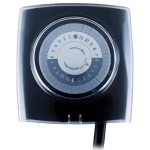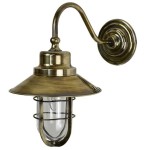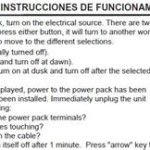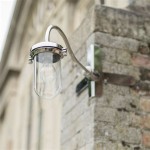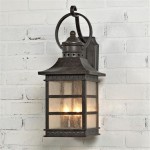Architectural Outdoor Lighting Design: Illuminating Structures and Spaces
Architectural outdoor lighting design is an art form that blends technical expertise with artistic vision to enhance the beauty and functionality of structures and outdoor spaces. It is not merely about illuminating a building; it is about creating a captivating and immersive experience. Effective outdoor lighting design can dramatically impact the perception of a building's architecture, enhance its security, and create a welcoming and inviting atmosphere. This article delves into the key aspects of architectural outdoor lighting design, exploring its principles, techniques, and the vital role it plays in shaping the built environment.
Principles of Architectural Outdoor Lighting Design
Architectural outdoor lighting design adheres to specific principles to achieve its desired outcomes. These principles guide the selection of light sources, fixtures, and their placement. The primary considerations include:
- Illumination Levels: Determining the appropriate level of illumination for different areas is essential. Areas like pathways and entrances require brighter lighting, while more ambient lighting may suffice for gardens or courtyards.
- Light Color Temperature: The color temperature of light sources affects the overall ambiance. Warm white light (2700-3000K) creates a cozy and inviting feel, while cool white light (4000-4500K) is more functional and bright.
- Light Distribution: The way light is distributed impacts how features are highlighted. Uplighting can emphasize vertical surfaces, while downlighting provides a more general illumination.
- Light Control: Control over light direction, intensity, and color is crucial. Architectural lighting may employ a variety of light control methods, including fixtures with adjustable beams, dimmers, and automated systems.
- Energy Efficiency: Selecting energy-efficient light sources and fixtures is paramount. LED lighting offers significant energy savings and longevity, making it the preferred choice for many architectural outdoor lighting applications.
Techniques and Considerations in Architectural Outdoor Lighting Design
Architectural outdoor lighting design employs various techniques to achieve its goals. Some of the commonly used methods include:
- Accent Lighting: Using focused beams of light to highlight specific architectural features, such as sculptures, fountains, or building facades.
- Silhouetting: Creating a dramatic effect by backlighting objects or structures, making them appear as silhouettes against a brighter background.
- Moonlighting: Simulating moonlight by using soft, warm white light to create a romantic and ethereal ambiance.
- Wash Lighting: Casting a broad, even wash of light across a surface to create a sense of uniformity and highlight its texture.
- Grazing Lighting: Using low-angle light to emphasize surface textures and create visual interest. This technique is especially effective for highlighting brickwork or stone facades.
Beyond technical considerations, architectural outdoor lighting design involves a deep understanding of the surrounding environment and its impact on the overall design. Factors like the surrounding landscape, existing flora, and the scale of the building must be integrated into the lighting plan. The goal is to create a harmonious and aesthetically pleasing visual experience that complements the architecture and enhances the outdoor space.
Importance of Architectural Outdoor Lighting Design
Architectural outdoor lighting design plays a pivotal role in transforming the perception of structures and outdoor spaces. It offers numerous benefits, including:
- Enhanced Aesthetics: Skilled lighting design can accentuate the architectural beauty of a building, highlighting its intricate details and creating a captivating visual experience.
- Improved Safety and Security: Well-lit walkways and entrances deter crime and enhance safety. Outdoor lighting can also illuminate security cameras and sensors, providing an extra layer of protection.
- Increased Functionality: Lighting design can create distinct and functional spaces within an outdoor area, allowing for activities like dining, socializing, or relaxation.
- Enhanced Visibility and Wayfinding: Proper lighting makes it easier for people to navigate outdoor spaces, especially at night.
- Environmental Sustainability: Selecting energy-efficient light sources and fixtures can significantly reduce energy consumption and minimize the environmental impact of outdoor lighting.
In conclusion, architectural outdoor lighting design is a critical element in creating beautiful, functional, and safe outdoor spaces. By understanding the principles, techniques, and the vital role of lighting, architects and designers can transform buildings and landscapes into breathtaking and inviting environments.

Bring Life To Architecture With Exterior Lighting Outdoor Installers

The Paths To Enlightenment Lighting Design For Landscape Architecture

A Guide To Outdoor Lighting Design Rtf Rethinking The Future

An Architect S Guide To Outdoor Lighting Architizer Journal

An Architect S Guide To Outdoor Lighting Architizer Journal
Outdoor Lighting Ideas 10 Designs Architecture Design

Outdoor Landscape Lighting Design Tips Ideas Environmental Designs

Outdoor Landscape Lighting Design Tips Ideas Environmental Designs

Exterior Architectural Lighting Design Installation In Baldwin Park Fl Illuminations Usa

How To Choose A Landscape Lighting Design That Fits Your Home
